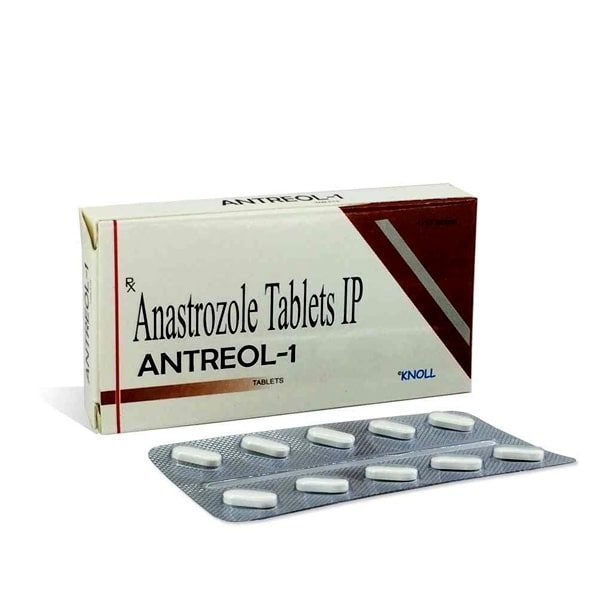CAR-T Cell Therapy: A Revolutionary Cancer Treatment
Imagine a world where your own immune system becomes a powerful weapon against cancer. 🦸♀️💪 This isn’t science fiction—it’s the revolutionary reality of CAR-T Cell Therapy. As we stand on the brink of a new era in cancer treatment, this groundbreaking approach is turning heads and offering hope to patients who’ve exhausted traditional options.
But what exactly is CAR-T Cell Therapy, and why is it causing such a stir in the medical community? 🤔 This innovative treatment harnesses the power of our body’s natural defenses, supercharging them to recognize and destroy cancer cells with remarkable precision. It’s a game-changer that’s already saving lives and reshaping our understanding of what’s possible in cancer care.
In this blog post, we’ll dive deep into the world of CAR-T Cell Therapy, exploring its inner workings, benefits, and challenges. From understanding the treatment process to examining recent advancements and future prospects, we’ll unravel the complexities of this cutting-edge therapy and its potential to transform cancer treatment as we know it. 🔬🧬🏥
Understanding CAR-T Cell Therapy
Definition and basic concept
CAR-T cell therapy is a groundbreaking form of cancer immunotherapy that harnesses the power of a patient’s own immune system to fight cancer. This innovative treatment involves modifying T-cells, a type of white blood cell, to recognize and attack cancer cells more effectively. The “CAR” in CAR-T stands for Chimeric Antigen Receptor, a specially engineered protein that enables T-cells to target specific cancer antigens.
How CAR-T cells are engineered
The process of engineering CAR-T cells involves several steps:
- T-cell collection: Blood is drawn from the patient, and T-cells are isolated.
- Genetic modification: The T-cells are genetically altered to express the CAR protein.
- Cell expansion: Modified T-cells are multiplied in the laboratory.
- Infusion: The engineered CAR-T cells are reintroduced into the patient’s bloodstream.
This personalized approach ensures that each patient receives a unique treatment tailored to their specific cancer.
Types of cancers targeted
CAR-T cell therapy has shown remarkable success in treating various blood cancers, including:
- Acute lymphoblastic leukemia (ALL)
- Diffuse large B-cell lymphoma (DLBCL)
- Multiple myeloma
Researchers are actively exploring the potential of CAR-T therapy for solid tumors, such as breast, lung, and brain cancers. As we delve deeper into the CAR-T treatment process, we’ll see how this revolutionary therapy is administered and what patients can expect during their treatment journey.
The CAR-T Treatment Process
A. Patient screening and eligibility
Before initiating CAR-T cell therapy, patients undergo thorough screening to determine their eligibility. Key factors considered include:
- Cancer type and stage
- Overall health status
- Previous treatments received
- Presence of specific tumor antigens
Eligible patients typically have advanced cancers that haven’t responded to conventional treatments, making CAR-T therapy a potentially life-saving option.
B. T-cell collection and modification
Once a patient is deemed eligible, the process of T-cell collection begins:
- Leukapheresis: Blood is drawn and processed to isolate T-cells
- Genetic engineering: T-cells are modified to express chimeric antigen receptors (CARs)
- Expansion: Modified cells are cultivated to increase their numbers
- Quality control: CAR-T cells undergo rigorous testing before infusion
This stage can take several weeks, during which patients may receive bridging therapy to manage their cancer.
C. CAR-T cell infusion
Prior to infusion, patients often receive lymphodepleting chemotherapy to create space for the CAR-T cells. The engineered cells are then infused back into the patient’s bloodstream, typically in a single session. This procedure is generally well-tolerated and performed on an outpatient basis.
D. Post-treatment monitoring
Following infusion, patients require close monitoring for potential side effects and treatment response. This phase involves:
- Regular blood tests and imaging scans
- Monitoring for cytokine release syndrome (CRS) and neurological events
- Assessing CAR-T cell persistence and tumor response
Patients may need to stay near the treatment center for several weeks post-infusion for prompt management of any complications. Long-term follow-up continues to evaluate treatment efficacy and potential late effects.
Now that we’ve explored the CAR-T treatment process, let’s examine the advantages this innovative therapy offers over traditional cancer treatments.
Advantages of CAR-T Cell Therapy
Precision targeting of cancer cells
CAR-T cell therapy represents a significant leap forward in cancer treatment due to its unparalleled ability to precisely target cancer cells. Unlike traditional therapies that may affect both healthy and cancerous cells, CAR-T cells are engineered to recognize specific antigens on cancer cells, making them highly selective in their attack. This precision targeting offers several benefits:
- Reduced damage to healthy tissues
- Increased treatment efficacy
- Lower risk of systemic side effects
The engineered T-cells act like guided missiles, homing in on cancer cells with remarkable accuracy, potentially leading to better outcomes for patients.
Potential for long-term remission
One of the most promising aspects of CAR-T cell therapy is its potential to induce long-term remission in some patients. This groundbreaking treatment has shown remarkable results, particularly in:
- Acute lymphoblastic leukemia (ALL)
- Non-Hodgkin lymphoma
- Multiple myeloma
In some cases, patients who had exhausted all other treatment options have achieved complete remission that has lasted for years. This long-lasting effect is attributed to the CAR-T cells’ ability to persist in the body, providing ongoing surveillance against cancer recurrence.
Effectiveness in treatment-resistant cancers
CAR-T cell therapy has emerged as a beacon of hope for patients with treatment-resistant cancers. It has demonstrated efficacy in cases where traditional therapies like chemotherapy and stem cell transplants have failed. This breakthrough is particularly significant for:
- Relapsed or refractory B-cell malignancies
- Certain types of solid tumors that were previously considered untreatable
By offering a new avenue of treatment for these challenging cases, CAR-T therapy is revolutionizing the landscape of cancer care and providing options where none existed before.
With these remarkable advantages, CAR-T cell therapy is poised to transform cancer treatment. However, it’s important to consider the challenges and potential side effects associated with this innovative therapy.
Challenges and Side Effects
Cytokine release syndrome
Cytokine release syndrome (CRS) is one of the most significant challenges associated with CAR-T cell therapy. This potentially life-threatening condition occurs when the immune system becomes overactive, releasing a flood of inflammatory molecules called cytokines. Symptoms of CRS can range from mild flu-like symptoms to severe organ dysfunction and may include:
- High fever
- Low blood pressure
- Difficulty breathing
- Rapid heart rate
- Confusion or delirium
Proper management of CRS is crucial for patient safety and treatment success. Doctors closely monitor patients and may administer targeted therapies to mitigate severe symptoms.
Neurotoxicity risks
Another serious side effect of CAR-T cell therapy is neurotoxicity, also known as immune effector cell-associated neurotoxicity syndrome (ICANS). This condition can cause various neurological symptoms, including:
- Confusion and disorientation
- Difficulty speaking or writing
- Seizures
- Tremors
- Altered consciousness
Neurotoxicity typically occurs within days to weeks after CAR-T cell infusion and requires careful monitoring and management by healthcare professionals.
Manufacturing complexities
The production of CAR-T cells is a complex and time-consuming process that presents significant challenges:
- Personalized nature: Each batch of CAR-T cells must be created specifically for each patient.
- Quality control: Ensuring consistent quality and potency of the engineered cells is crucial.
- Time constraints: The manufacturing process can take several weeks, which may be critical for patients with rapidly progressing cancers.
- Infrastructure requirements: Specialized facilities and trained personnel are necessary for CAR-T cell production.
High treatment costs
The high cost of CAR-T cell therapy remains a significant barrier to widespread adoption. Factors contributing to the expense include:
- Complex manufacturing process
- Personalized nature of the treatment
- Specialized facilities and equipment
- Intensive patient monitoring and care
These challenges highlight the need for ongoing research to improve the safety, efficacy, and accessibility of CAR-T cell therapy. As we move forward, addressing these issues will be crucial in expanding the reach of this revolutionary cancer treatment.
Recent Advancements in CAR-T Therapy
Improved CAR designs
Recent advancements in CAR-T cell therapy have focused on enhancing the design of chimeric antigen receptors (CARs). These improvements aim to:
- Increase CAR-T cell persistence in the body
- Enhance tumor-killing efficiency
- Reduce toxicity and side effects
Some notable developments include:
- Multi-targeted CARs: Capable of recognizing multiple tumor antigens simultaneously
- Switchable CARs: Allowing for better control of CAR-T cell activation
- Armored CARs: Equipped with additional features to overcome immunosuppressive tumor microenvironments
Expanding to solid tumors
While CAR-T therapy has shown remarkable success in blood cancers, researchers are now making strides in adapting this treatment for solid tumors. Key strategies include:
- Developing CARs that target solid tumor-specific antigens
- Engineering CAR-T cells to overcome the hostile tumor microenvironment
- Exploring combination therapies with checkpoint inhibitors
Off-the-shelf CAR-T products
One of the most exciting advancements in CAR-T therapy is the development of allogeneic or “off-the-shelf” CAR-T products. These ready-made treatments offer several advantages:
- Reduced manufacturing time and costs
- Immediate availability for patients
- Potential for treating multiple patients with cells from a single donor
Researchers are using gene-editing technologies like CRISPR to create universal CAR-T cells that can be safely used in any patient, regardless of genetic matching. This approach could significantly expand access to CAR-T therapy and reduce waiting times for critically ill patients.
Future Prospects and Research Directions
Combining CAR-T with other immunotherapies
As CAR-T cell therapy continues to evolve, researchers are exploring innovative ways to enhance its effectiveness. One promising avenue is combining CAR-T cells with other immunotherapies to create a synergistic effect. This approach aims to:
- Boost the overall immune response against cancer cells
- Overcome tumor resistance mechanisms
- Improve long-term patient outcomes
Some potential combinations include:
- CAR-T cells with checkpoint inhibitors
- CAR-T cells with bispecific antibodies
- CAR-T cells with cancer vaccines
Enhancing CAR-T cell persistence
A key challenge in CAR-T therapy is maintaining the longevity of modified T-cells in the patient’s body. To address this, scientists are investigating several strategies:
- Optimizing CAR design to improve T-cell survival
- Developing memory CAR-T cells for long-term protection
- Exploring novel co-stimulatory domains to enhance persistence
Reducing manufacturing time and costs
Current CAR-T cell production is time-consuming and expensive, limiting its widespread availability. Researchers are working on:
- Streamlining the manufacturing process
- Developing off-the-shelf CAR-T products
- Implementing automated production systems
These advancements could significantly reduce costs and waiting times for patients.
Exploring applications beyond cancer
While CAR-T therapy has shown remarkable success in treating certain blood cancers, scientists are now investigating its potential in other areas:
- Solid tumors
- Autoimmune diseases
- Infectious diseases
These expanding applications could revolutionize treatment options for a wide range of medical conditions, further solidifying CAR-T therapy’s position as a groundbreaking medical innovation.
Conclusion
CAR-T cell therapy represents a groundbreaking approach in cancer treatment, offering hope to patients who have exhausted traditional options. This innovative immunotherapy harnesses the power of a patient’s own immune system to target and eliminate cancer cells. Throughout the treatment process, from cell collection to reinfusion, CAR-T therapy demonstrates remarkable efficacy, particularly in certain blood cancers.
While challenges such as side effects and manufacturing complexities exist, ongoing research and advancements continue to improve the safety and efficacy of CAR-T therapy. As scientists explore new applications and refine existing protocols, the future of CAR-T cell therapy looks promising. This revolutionary treatment has the potential to transform cancer care, offering patients a powerful weapon in the fight against this devastating disease.




















Add comment